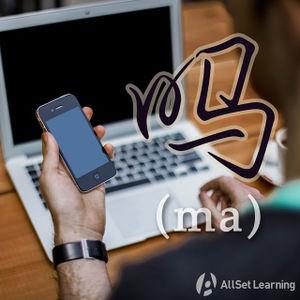Difference between revisions of "Questions with "le ma""
NFiorentini (talk | contribs) m (Moved "+" to inside of the parentheses.) |
|||
| Line 1: | Line 1: | ||
{{Grammar Box}} | {{Grammar Box}} | ||
| − | Asking questions about completed actions will involve using both 了 (le) and 吗 (ma). These are simply added to the end of a sentence or statement. | + | Asking questions about completed actions will involve using both 了 (le) and 吗 (ma). These are simply added to the end of a sentence or statement. Just make sure that 了 (le) comes first, followed by 吗 (ma). |
== General Usage == | == General Usage == | ||
| Line 11: | Line 11: | ||
</div> | </div> | ||
| + | |||
| + | Note the order of 了 (le) and 吗 (ma). | ||
=== Examples === | === Examples === | ||
| Line 34: | Line 36: | ||
</div> | </div> | ||
| − | NOTE: in this structure, the topic is also the object for the | + | NOTE: in this structure, the topic is also the object for the verb. |
=== Examples === | === Examples === | ||
| Line 50: | Line 52: | ||
Notice that in these examples the object is introduced first as a [[Topic-comment sentences|topic]]. | Notice that in these examples the object is introduced first as a [[Topic-comment sentences|topic]]. | ||
| − | Finally, please note that this pattern is nothing more than the combination of the [[ | + | Finally, please note that this pattern is nothing more than the combination of the [[expressing completion with "le"]] pattern and the [[Yes-no questions with "ma"|yes/no questions with "ma"]] pattern. |
==See also== | ==See also== | ||
| − | *[[Yes - no questions with ma]] | + | *[[Yes-no questions with "ma"]] |
| − | *[[Expressing completion with le]] | + | *[[Expressing completion with "le"]] |
*[[Rhetorical Questions with "nandao"]] | *[[Rhetorical Questions with "nandao"]] | ||
Revision as of 07:11, 23 May 2017
-
Level
-
Similar to
-
Used for
-
Keywords
Asking questions about completed actions will involve using both 了 (le) and 吗 (ma). These are simply added to the end of a sentence or statement. Just make sure that 了 (le) comes first, followed by 吗 (ma).
Contents
General Usage
Structure
Subj. + Verb + Obj. + 了吗?
Note the order of 了 (le) and 吗 (ma).
Examples
- 你 吃饭 了 吗? Did you eat?
- 老板 走 了 吗? Did the boss leave?
- 你男朋友 找到 新 工作 了 吗? Has your boyfriend found a new job yet?
- 妈妈,你 昨天 给 我 打电话 了 吗? Mom, did you call me yesterday?
- 你 今天 去 上班 了 吗? Did you go to work today?
With a Topic
Structure
Topic (+ Subj.) + Verb + 了吗?
NOTE: in this structure, the topic is also the object for the verb.
Examples
- 晚饭 你 吃 了 吗? Did you eat dinner?
- 衣服 你 洗 好 了 吗? Have you finished washing the clothes?
- 作业 你 写 完 了 吗? Have you finishing doing homework?
- 这 个 电影 你 看 了 吗? Have you seen this movie?
- 我 的 邮件 你 收到 了 吗? Have you received my email?
Notice that in these examples the object is introduced first as a topic.
Finally, please note that this pattern is nothing more than the combination of the expressing completion with "le" pattern and the yes/no questions with "ma" pattern.
See also



